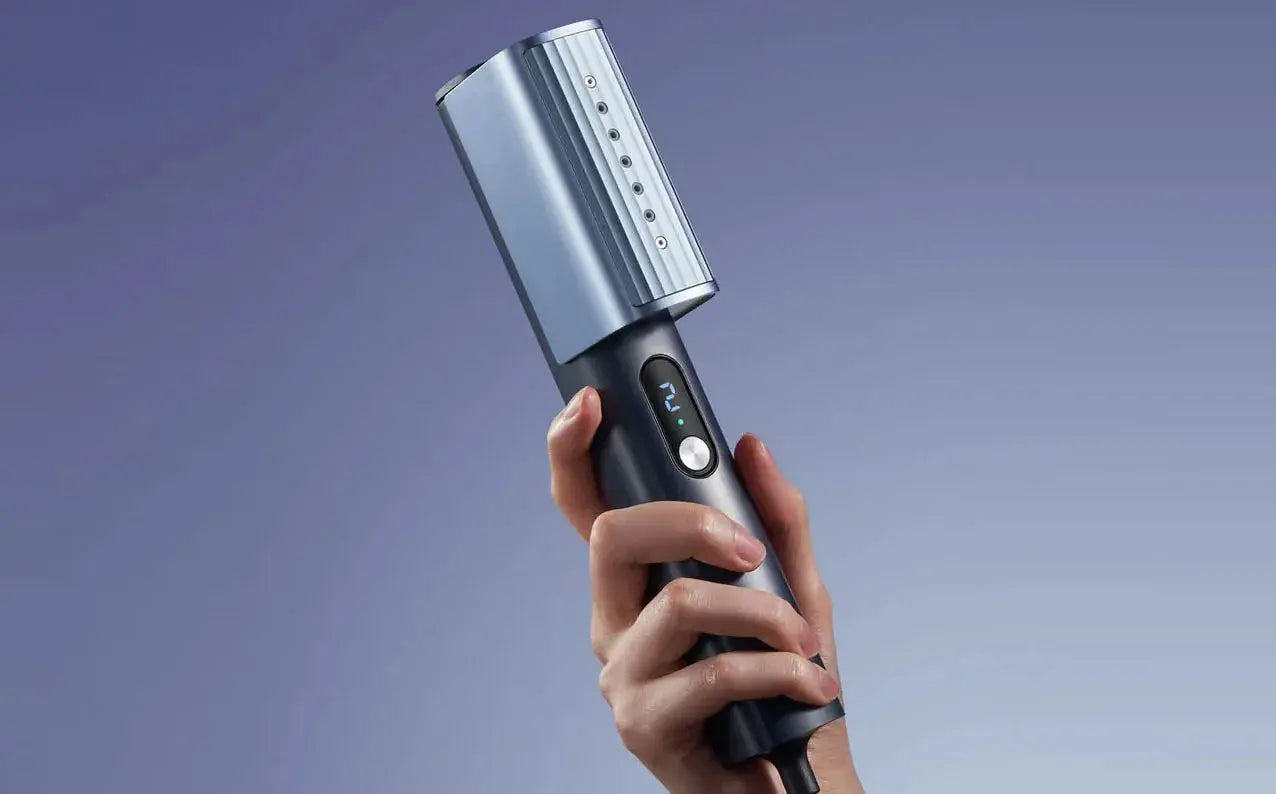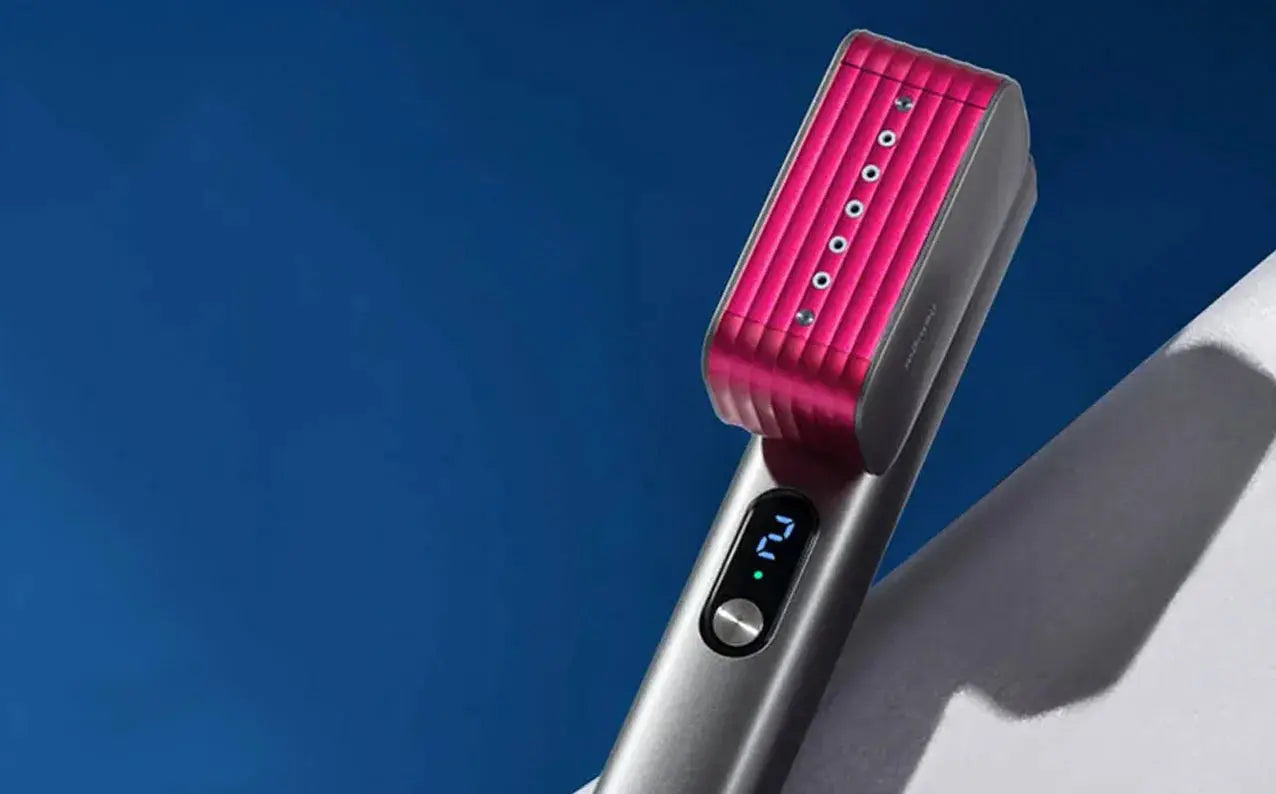Portable steamer: The secret classroom assistant of a university professor
What outsiders see of a professor's life is mostly stacks of books, papers and formulas on the blackboard. But my daily life is actually much more down-to-earth: endless meetings, students' emails and constantly changing shirts.
Reality is far more mundane than we imagine: apart from writing and teaching, what drives me crazy the most is that morning pile of crumpled clothes.
Whether giving a lecture in a classroom of a hundred people, or participating in international conferences or discussions with peers, in my opinion, dressing up is not about showing off, but rather a way of treating oneself seriously.
A neatly ironed shirt can make me look like a "prepared person", and it really helps to bring my mindset back on track.
Time is like a crossroads: in the morning, I don't have 20 minutes to set up the stage, but I can usually get myself ready and go on stage within five minutes.
I remember a few years ago, I was invited to attend an international conference on educational technology in Chicago. The trip was rushed and I only brought a few sets of clean dress clothes. After arriving at the hotel, I found that the shirts and suits in my luggage were all wrinkled. The hotel's ironing equipment was old and heavy, with spots on the base plate. It almost made me doubt whether it could damage my shirts. That day, I spun around in front of the mirror for several minutes, but in the end, I could only helplessly pat my collar—I felt a kind of awkwardness as if being beaten.
That speech went smoothly, but I always felt that my attention was momentarily distracted by the pleats at the collar—it was a very uncomfortable feeling. In academic settings, dressing is a form of silent communication. After that experience, I decided to look for a more suitable solution for myself. So, I began to try using a portable steamer.
For the professor, business trips and giving lectures have almost become part of my daily routine. The ordinary iron requires a board and takes a lot of time, which doesn't fit my schedule; the portable steamer is small, heats up quickly, and is more in line with my style of having to be on display wherever I go.
The first time I used a portable steamer was at the recommendation of a colleague. He was a visiting lecturer who traveled frequently to various universities. He said, "Give it a try, it's much more convenient." I thought, "No way!" But the result was a pleasant surprise—since then, my perspective on clothing care has changed. Now, whenever I go on a business trip, I always put it in my carry-on. As long as it's plugged in and the shirt is hung up, it can be restored to its original shape in just three minutes. Even better, this small machine is gentle on most fabrics—cotton, wool, silk can all be used. At least so far, I haven't damaged any piece of clothing. Even my academic gown—the heavy black ceremonial robe—can be restored to its decent appearance quickly with it.
Many students might think that when professors stand on the podium to give a lecture, their attention is solely focused on the transmission of knowledge. But in fact, there is no place to hide on the podium. The lights will magnify the wrinkles on the cuffs and the small folds at the hem of the clothes to an extremely clear extent.

Once, I went to class wearing a shirt that hadn't been ironed. That day, my lecture content was very complex, involving a lot of logical reasoning and data presentation. But after class, a student said to me with a smile, "Professor, your shirt is wrinkled like our exam papers today." Although it was just a joke, I knew in my heart that such small details could affect the first impression others had of my professionalism.
Later, I regarded the steamer as my "mental protective suit"—ironing the clothes first gave me a sense of ceremony, and made me feel much more at ease when standing on the podium. Just as I often tell my students, details determine one's mindset, and one's mindset determines one's performance.
Like I tell my students: the small stuff shapes how you show up, and how you show up shapes what you do. After months of steady use, a few habits stuck with me. First trick: hang the garment—bathroom door or shower rod works fine—so gravity does some of the work before I hit it with steam. I always work top-to-bottom: collar and shoulders first, then down the body—less back-and-forth that way. back off a touch for silk or wool so the fabric doesn't get soggy. After steaming I let things hang for a few minutes—give the fibers time to cool and settle before wearing. These little routines actually save time—most mornings I can have a shirt lecture-ready in under three minutes.
Travel is part of the job—around three to five conferences a year, plus guest talks at other schools. My old stressor was unpacking wrinkled shirts from the luggage. Once I started packing a steamer, that worry pretty much vanished. Case in point: on a recent Boston trip I steamed three outfits in about ten minutes. I showed up to sessions feeling energized, which made conversations and networking much easier. One grad student kidded me, "Professor, how are you always so pressed?" I just grinned and said, "Secret weapon in the suitcase."
Some might roll their eyes at how much I lean on this gadget, but taking five minutes to tidy my clothes gives me a little order—and calms me down. That five-minute ritual is a small promise to myself: today matters, so I’ll show up ready. It’s not just for conferences—I’ll steam a shirt before a family dinner or before chaperoning a student event. Looking neat helps me keep my composure when everything else feels messy. My daughter once watched and laughed, "Dad, you’re putting the clothes in a sauna." Fair enough—there’s some truth to that. As the steam smoothed the fabric, the little knot of nerves I’d had eased away too.
I found some models (Nesugar included) that clearly target travelers: compact, fast, and gentle on delicate shirts. In short: it’s a small gadget, but it made me feel calmer at work and on the road. Looking back, I’ve learned that aside from research and teaching, the small daily details matter just as much. A portable steamer didn’t change my career—but it helped me balance travel, teaching, and the tiny tasks that keep life moving. It’s not glamorous, but it saved me from awkward moments and nudged my confidence up when I needed it. Big changes don’t always come from big choices—sometimes from tiny habits. For me, the steamer is one of those small, steady comforts: simple but essential.





